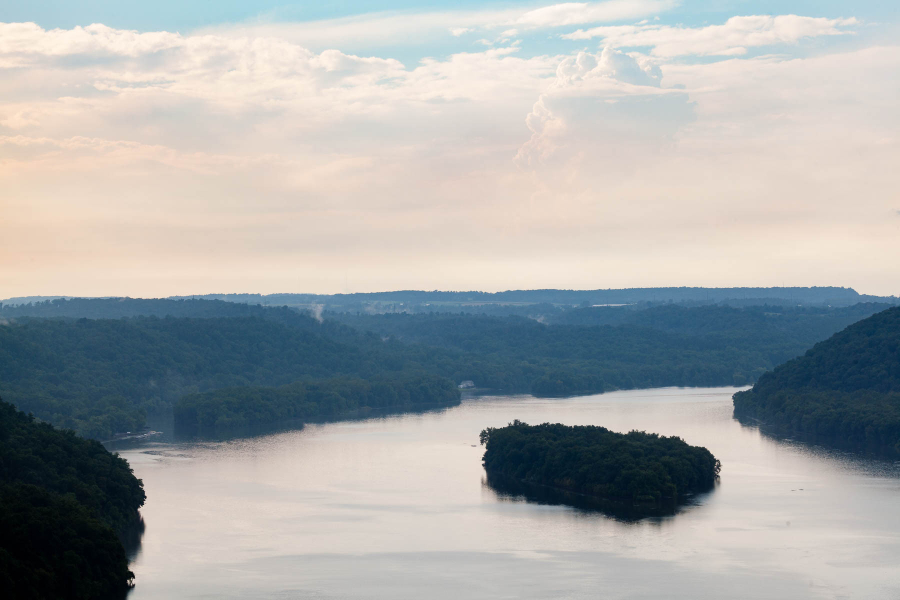The science and policy behind Chesapeake Bay restoration
How the Chesapeake Bay Commission uses Bay Program science to prioritize funding

As a signatory to every Chesapeake Bay Watershed Agreement and the only one representing the legislative branch of state government, the Chesapeake Bay Commission brings a unique perspective to the Bay Program partnership. Most of its 21 members are elected state legislators from Pennsylvania, Maryland and Virginia, experienced at crafting and negotiating public policy across a wide range of complex subjects. It is impossible for us to know the details of every topic impacting the Chesapeake watershed, so we rely on Bay Program experts to help us understand the implications of a legislative proposal.
Through the Commission, legislators have direct access to the robust scientific resources available through the Chesapeake Bay Program. This relationship has informed numerous policies over the past forty years, including how we spend public money for the Bay’s restoration.
Seventeen years after the first Chesapeake Bay Agreement was signed, the partnership had evolved from that initial one-page pledge to a much more intensive approach. With the signing of Chesapeake 2000, the Chesapeake Executive Council committed to over 100 goals across five broad categories. This comprehensive document reflected the complexity and interconnectedness of the Bay and its vast 64,000 square mile watershed, but implementation of such an ambitious plan was daunting.
When applying its legislative skills to Chesapeake 2000, the Commission soon identified a threshold question: “how much will this cost?”
Under the leadership of former State Representative Russ Fairchild of Pennsylvania, the Commission partnered with its member states for an in-depth analysis of the resources needed for each goal. The results, published as The Cost of a Clean Bay in 2003, identified a total cost of $18.7 billion, with less than one-third of that covered by existing programs at the time.
The funding gap, the report itself admitted, was “staggering.”

Despite this conclusion, the Commission and the partnership did not give up on their commitment to this new Agreement. To the contrary, the report was a call to action to maintain existing programs and secure new funding at the state and federal level. It was also the beginning of a more strategic approach to how we invest in the Chesapeake Bay.
One year later, the Commission published a follow-up report, Cost-Effective Strategies for the Bay, which answered a new question: “With limited funds available, where should we focus available funds to achieve the most efficient use of taxpayer dollars?”
Thanks to the data collection and modeling capacity of the Chesapeake Bay Program, the Commission was able to analyze 34 different best management practices for their potential to reduce nutrient and sediment loads to the Bay. Six practices stood out—wastewater treatment upgrades and five agricultural practices. The analysis determined that if fully implemented, those six practices could achieve three-quarters of the necessary reductions.
Science in hand, the Commission moved quickly to prioritize resources for these practices. Maryland’s Bay Restoration Fund and Chesapeake and Atlantic Coastal Bays 2010 Trust Fund, Virginia’s Natural Resource Commitment Fund and Pennsylvania’s Resource Enhancement & Protection Program were all created within five years of the Commission’s cost reports, funneling new state resources to the work of protecting water quality.
The cost-effectiveness of agricultural practices also led the Commission to explore opportunities in the federal Farm Bill. Reauthorized approximately every five years, the Farm Bill updates a wide range of federal agriculture programs, from crop insurance to research to food assistance. Conservation programs within the Farm Bill were, and remain, the largest single source of funding for Chesapeake Bay restoration.
With the Farm Bill up for reauthorization in 2007, the Commission reached out to agricultural and conservation specialists throughout the Bay community and identified several priorities for reform, including increased funding and technical assistance, establishment of a regional fund specific to Chesapeake Bay, and targeting of funds to maximize environmental benefits.
Reinforced by the Commission’s cost reports, the region’s Congressional delegation embraced the recommendations and were successful in creating a new Chesapeake Bay Watershed Initiative (CBWI) when the Farm Bill was reauthorized in 2008. Over the next six years, the CBWI provided more than $250 million in additional funding to the region. The CBWI also utilized the extensive modeling capabilities of the Bay Program to become the first program to target funds to sub-watersheds, or those watersheds located inside a larger watershed, based on their nutrient reduction potential.
While CBWI was replaced in the 2014 Farm Bill with a new effort known as the Regional Conservation Partnership Program, the targeting approach lives on in many ways, including the Environmental Protection Agency’s use of “most effective basins” when distributing some of its grant funding to states, priority areas for the National Fish & Wildlife Foundation’s Chesapeake Bay Stewardship Fund, and Pennsylvania’s new Agricultural Conservation Assistance Program.
Similarly, the jurisdiction within the Chesapeake Bay watershed are currently looking to agriculture to provide over 85% of the remaining nutrient reductions needed to meet water quality goals because those practices are still some of the most cost-effective investments.
The Bay Program’s direct link between scientists and legislators is a key reason why the Chesapeake region is a global leader in estuary policy. As we move into the next chapter of Bay restoration, these relationships are crucial as we continue to look to our science partners for the data to guide our decisions.

Comments
There are no comments.
Thank you!
Your comment has been received. Before it can be published, the comment will be reviewed by our team to ensure it adheres with our rules of engagement.
Back to recent stories